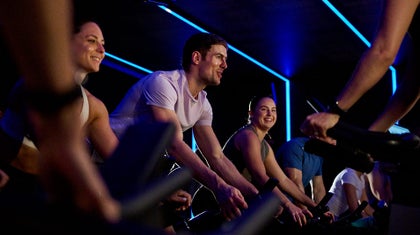What to look for in a running shoe
by Jacinta Koelewyn on Friday 05 August 2022
3 min read
Running is one of the simplest sports out there. The only special equipment you really need is a good pair of shoes. But finding the right running shoes can be a daunting task when you’re faced with so many options. However, with some simple tips to keep in mind when purchasing shoes, it’ll be walk in the park!
Cushioning
Every pair or runners or joggers will have some cushioning. Finding the right balance between weight and cushioning comes down to the distance and how often you’re aiming to run.
For example, if you’re running long distance, extra cushioning could help with impact absorption. On the other hand, lighter shoes with less cushioning can help you feel faster, and midsole foams are a bit of a middle point.
Flexibility
Running shoe flexibility – how flexible or stiff the shoe is – can make a huge difference to your comfort when you run. As a general rule of thumb, running shoes should flex at the same locations as your foot would. For instance, if you hold your shoe at the sole and bend the front of the shoe upwards, it should only flex at the ball of the foot.
However, if you’re someone who gets stiffness or pain when you flex your toes upwards, some shoe stiffness may actually be beneficial. That’s because it can reduce some of the motion and protect your joints.
Another key consideration is the type of surface you’ll be running on. If you’ll mostly be running on the treadmill, a flexible shoe may be ideal. For trail runs, where there are potential bumps and hazards, having a lot of flexibility could increase your risk of injury.
Fit and feel
It’s easy to be swayed by the most fashionable running shoe, but it’s always better to prioritise function. To do this, you’ll have to consider different elements of a shoe, including the:
· Upper – look for something shaped like your foot and that doesn’t bind or chafe.
· Ankle collar – pay attention to how the padding sits with the bones in your ankles and whether your heel slips.
· Heel counter – opt for a heel that allows a comfortable ankle motion.
· Saddle – the arch of your foot is supported by a range of lacing systems, overlays and eyelets that mould the saddle to your foot. It should fit and hold your foot, helping you avoid slipping while also allowing your foot to naturally dome.
· Toebox – at the end of your shoe, you can usually find a toebox. This is often a thicker piece of rubber designed to help protect your toes from stubbing. Look for a toebox that lets your foot flex and spread naturally without rubbing or binding your toes.
· Outsole – the rubber or foam at the bottom of your running shoe provides traction and durability. You’ll want to feel underfoot stability, without excess stiffness or weight.
· Heel-toe drop – Choose a shoe that doesn’t put stress on any weak parts of your foot and feels right from when you hit the ground to when you take off.
While there are many elements that make joggers the right or wrong fit, let yourself be guided by the fit and feel.
Our top 5 recommendations to hit the pavement on a daily basis
1. Get your foot properly measured every time you buy
2. Buy in-store, not online to ensure a better fit
3. Think of shoes as a tool, not a solution to fix how you run
4. Prioritise fit over fashion
5. Consider the surface you’re running on. If most of your training is on the road or in the gym, road shoes are for you!
Once you’re equipped with a new pair of runners, hit the pavement and make your way to your nearest Virgin Active club for a free tour!
Related articles
Move
3 min read
Love a boogie? Here’s why you should keep those dancing shoes on
Nourish
3 min read
5 high protein snack ideas that actually deliver
Move
3 min read
Get your spin on: what is rhythm cycling?
Enjoying our blog?
Sign up to our newsletter to get updates on training, healthy living, news and events.




